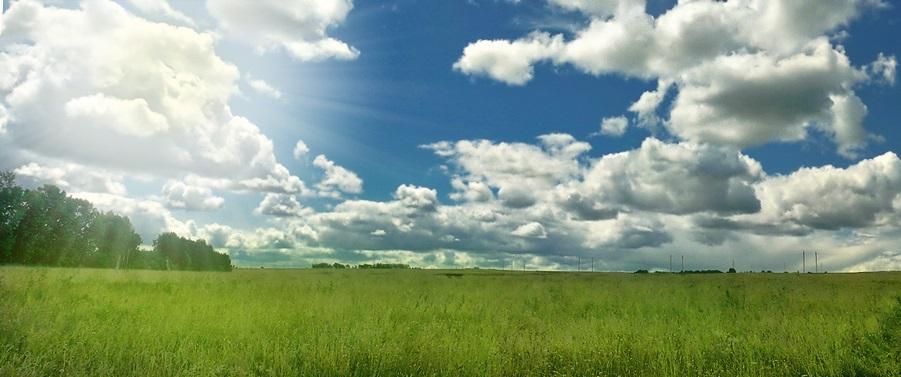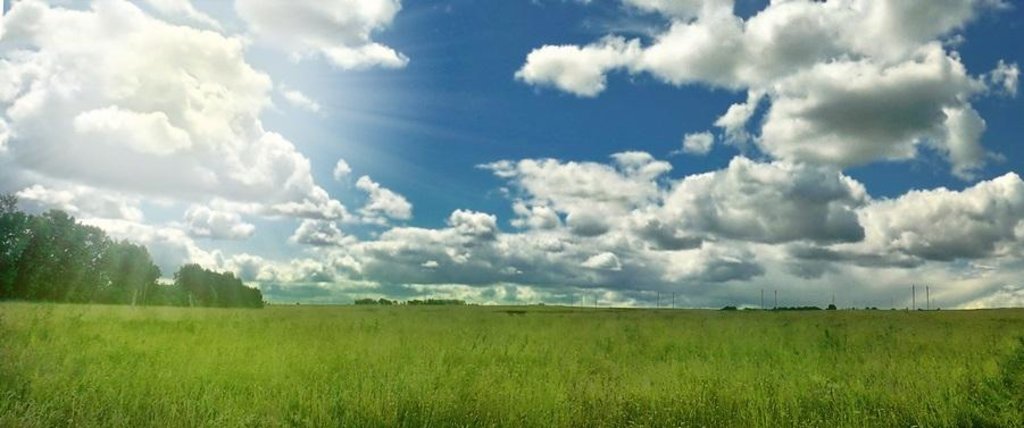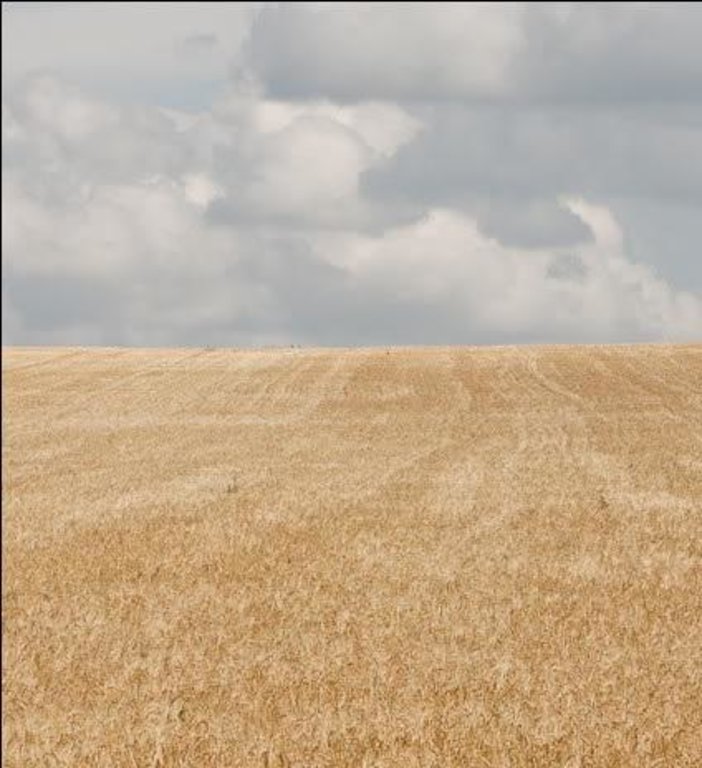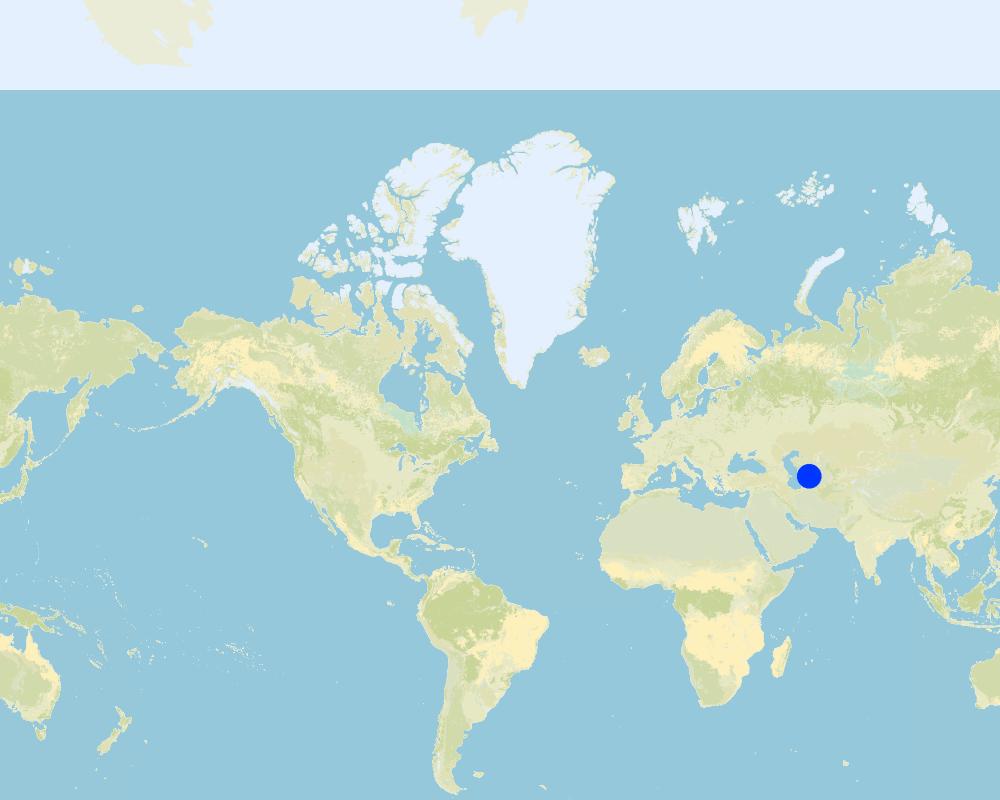Мелиорация (известкование), повышение плодородия серых лесных почв Владимирского ополья [Russian Federation]
- Creation:
- Update:
- Compiler: Dina Karpova
- Editor: –
- Reviewer: Alexandra Gavilano
Мелиорация (известкование), повышение плодородия серых лесных почв Владимирского ополья
technologies_1262 - Russian Federation
View sections
Expand all Collapse all1. General information
1.2 Contact details of resource persons and institutions involved in the assessment and documentation of the Technology
Key resource person(s)
SLM specialist:
1.3 Conditions regarding the use of data documented through WOCAT
When were the data compiled (in the field)?
01/06/2015
The compiler and key resource person(s) accept the conditions regarding the use of data documented through WOCAT:
Yes
1.4 Declaration on sustainability of the described Technology
Is the Technology described here problematic with regard to land degradation, so that it cannot be declared a sustainable land management technology?
No
2. Description of the SLM Technology
2.1 Short description of the Technology
Definition of the Technology:
Мелиорация (известкование) серых лесных почв Владимирского ополья, внесение удобрений.
2.2 Detailed description of the Technology
Description:
Мелиорация (известкование) серых лесных почв Владимирского ополья, выращивание однолетних культур в условиях семипольного севооборота, применение органических (навоз) и минеральных (азотных, фосфорных, калийных) удобрений.
Повышение плодородия почв, снижение деградации. Увеличение урожайности сельскохозяйственых культур. Уменьшение уплотения подпахотного слоя.
Известкование. Внесение удобрений. Агротехнологические мероприятия.
Владимирское ополье представляет собой восточную оконечность Клинско-Дмитровской гряды. Это высокое плато, сильно расчлененное глубоко врезанными лесными долинами, круто поднимающееся над обширными заселенными пространствами Нерль-Клязьминской низины. Абсолютные отметки водоразделов составляют от 160 до 230 м над уровнем моря. В центральной, наиболее приподнятой части Владимирского ополья преобладают водораздельные поверхности с абсолютными отметками 220-230 м.
2.3 Photos of the Technology
2.5 Country/ region/ locations where the Technology has been applied and which are covered by this assessment
Country:
Russian Federation
Region/ State/ Province:
Россия
Further specification of location:
Владимирская/Суздальский
Map
×2.6 Date of implementation
If precise year is not known, indicate approximate date:
- 10-50 years ago
2.7 Introduction of the Technology
Specify how the Technology was introduced:
- during experiments/ research
Comments (type of project, etc.):
Опыт был заложен в 1991 году.
3. Classification of the SLM Technology
3.2 Current land use type(s) where the Technology is applied

Cropland
- Annual cropping
- Perennial (non-woody) cropping
Comments:
Образование плотного подпахотного слоя.
Затрудительная вспашка.
Используется следующий севооборот: однолетние травы (вико-овсяная смесь), озимая пшеница, овес с подсевом трав, травы 1 г.п., травы 2 г.п., озимая пшеница, ячмень .
3.3 Further information about land use
Comments:
Водопотребление: богарное, богарное
Number of growing seasons per year:
- 1
Specify:
Вегетативный период (дни): 110
3.5 Spread of the Technology
Comments:
Общая площадь, на которой задействована технология, 0,005 м2.
3.6 SLM measures comprising the Technology

agronomic measures
- A2: Organic matter/ soil fertility

vegetative measures
- V2: Grasses and perennial herbaceous plants

management measures
- M4: Major change in timing of activities
- M5: Control/ change of species composition
- M6: Waste management (recycling, re-use or reduce)
- M7: Others
Comments:
Тип агрономических мероприятий: сменное возделывание культур, посадка бобовых в междурядьях, навоз / компост / остатки, минеральные (неорганические) удобрения, почвоулучшитель (известь, гипс), разрушение плотной подпочвы
3.7 Main types of land degradation addressed by the Technology

chemical soil deterioration
- Cn: fertility decline and reduced organic matter content (not caused by erosion)

biological degradation
- Bq: quantity/ biomass decline
3.8 Prevention, reduction, or restoration of land degradation
Specify the goal of the Technology with regard to land degradation:
- prevent land degradation
- reduce land degradation
4. Technical specifications, implementation activities, inputs, and costs
4.1 Technical drawing of the Technology
4.2 Technical specifications/ explanations of technical drawing
Внесение извести на опытное поле (серые лесные почвы)
Место расположения: опытное поле. Суздальский район/Владимирская область
Дата: 1998-10-24
Необходимые технические навыки для работников: высокий
Необходимые технические навыки для землепользователей: высокий
Основные технические функции: улучшение поверхностной структуры (покрытие коркой, уплотнение), улучшение подпочвенной структуры (твердый надпочвенный слой), повышение органического вещества, повышение биомассы (количество)
Вторичные технические функции: повышение / поддержание сохранения воды в почве
Смена культур
Вид: Севооборот семипольный
Навоз / компост / остатки
Количество: 60
5. Natural and human environment
5.1 Climate
Annual rainfall
- < 250 mm
- 251-500 mm
- 501-750 mm
- 751-1,000 mm
- 1,001-1,500 mm
- 1,501-2,000 mm
- 2,001-3,000 mm
- 3,001-4,000 mm
- > 4,000 mm
Agro-climatic zone
- sub-humid
Термический класс климата: умеренный
5.2 Topography
Slopes on average:
- flat (0-2%)
- gentle (3-5%)
- moderate (6-10%)
- rolling (11-15%)
- hilly (16-30%)
- steep (31-60%)
- very steep (>60%)
Landforms:
- plateau/plains
- ridges
- mountain slopes
- hill slopes
- footslopes
- valley floors
Altitudinal zone:
- 0-100 m a.s.l.
- 101-500 m a.s.l.
- 501-1,000 m a.s.l.
- 1,001-1,500 m a.s.l.
- 1,501-2,000 m a.s.l.
- 2,001-2,500 m a.s.l.
- 2,501-3,000 m a.s.l.
- 3,001-4,000 m a.s.l.
- > 4,000 m a.s.l.
5.3 Soils
Soil depth on average:
- very shallow (0-20 cm)
- shallow (21-50 cm)
- moderately deep (51-80 cm)
- deep (81-120 cm)
- very deep (> 120 cm)
Soil texture (topsoil):
- medium (loamy, silty)
- fine/ heavy (clay)
Topsoil organic matter:
- high (>3%)
5.4 Water availability and quality
Ground water table:
5-50 m
5.5 Biodiversity
Species diversity:
- high
5.6 Characteristics of land users applying the Technology
Level of mechanization:
- mechanized/ motorized
6. Impacts and concluding statements
6.1 On-site impacts the Technology has shown
Socio-economic impacts
Production
crop production
Quantity before SLM:
25 ц/га
Quantity after SLM:
36 ц/га
fodder production
Ecological impacts
Soil
soil organic matter/ below ground C
Biodiversity: vegetation, animals
biomass/ above ground C
6.3 Exposure and sensitivity of the Technology to gradual climate change and climate-related extremes/ disasters (as perceived by land users)
Gradual climate change
Gradual climate change
| Season | Type of climatic change/ extreme | How does the Technology cope with it? | |
|---|---|---|---|
| annual temperature | increase | not known |
Climate-related extremes (disasters)
Meteorological disasters
| How does the Technology cope with it? | |
|---|---|
| local rainstorm | not well |
| local windstorm | not known |
Climatological disasters
| How does the Technology cope with it? | |
|---|---|
| drought | not well |
Hydrological disasters
| How does the Technology cope with it? | |
|---|---|
| general (river) flood | not known |
Other climate-related consequences
Other climate-related consequences
| How does the Technology cope with it? | |
|---|---|
| reduced growing period | not known |
6.7 Strengths/ advantages/ opportunities of the Technology
| Strengths/ advantages/ opportunities in the land user’s view |
|---|
| Не требует высокотехнологичного оборудования . |
| Увеличение урожайности сельскохозяйственных культур севооборота . |
| Strengths/ advantages/ opportunities in the compiler’s or other key resource person’s view |
|---|
| Технология может быть применима на серых лесных почвах других ополий . |
| Относительно малозатратная технология . |
| Рекомендуемые дозы органических и минеральных удобрений не наносят вред экосистеме . |
| Улучшение физико-химических свойств почвы . |
6.8 Weaknesses/ disadvantages/ risks of the Technology and ways of overcoming them
| Weaknesses/ disadvantages/ risks in the compiler’s or other key resource person’s view | How can they be overcome? |
|---|---|
| Трудоемкость . |
7. References and links
7.1 Methods/ sources of information
- field visits, field surveys
- interviews with land users
7.2 References to available publications
Title, author, year, ISBN:
Справочник агрохимика автор Богдевич И. М. , Лапа В. В , Смеян Н. И. ,год издания 2007 .
Links and modules
Expand all Collapse allLinks
No links
Modules
No modules





